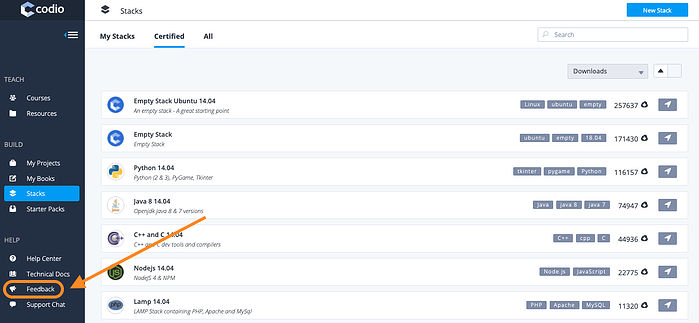Codio makes it easy for anyone who’s learning to code remotely to receive, read, review, and respond to instructor’s comments on their code, with the new In-Line Comments feature. Above all, it improves students’ ability to quickly identify teachers’ comments and allows for back-and-forth communication—all right next to the relevant code.
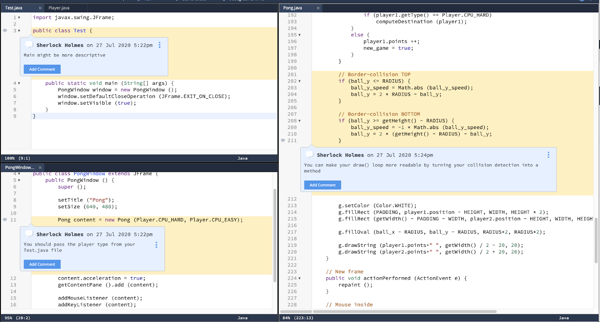
Single-line comments on the left files and a multi-line comment on the file on the right.
In-Line Comments Feature Enhances Remote Instructor-Student Collaboration
You’re probably wondering: “What’s the point of an In-Line Comments feature when many programming languages have an in-built facility to include both single and multi-line comments alongside the code?” The answer to that is our In-Line Comments feature goes beyond merely adding comments, taking it to a whole new level.
Codio includes many valuable features that help streamline remote communication between teachers and students or even groups as they collectively work on and evaluate a piece of code. When it comes to coding, even the tiny details matter, and our In-Line Comments feature helps instructors and students collaborate on code at every step of the process.
This is in stark contrast to static single-line comments in Python or C single-line comments that merely allow coders to add comments. On the other hand, our In-Line Comments feature quickly distinguishes between comments that have been reviewed from those that haven’t. It also makes it easy to identify whether the student has resolved the associated problems described in the comment. Thus it helps enhance remote learning by facilitating and encouraging students to fix the issues - highlighted in the comments - in the relevant piece of line code.
Additionally, it makes it quick and easy for new participants such as new instructors or new teammates to review the previous comments to get a sense of the sequence of work that has helped generate a particular code snippet. Read on to learn more about how our In-Line Comments feature boosts remote learning by increasing meaningful interaction between instructors and students.
There's no need to enable or activate them—In-Line Comments are already live! When you are working in a code file inside Codio’s native IDE, you can quickly and easily make in-line comments. Here's how...
How Codio In-Line Comments Work
To add comments, teachers access student work as normal. To create single-line comments, users simply click to the left of the line number. For multi-line comments, highlight the lines you want to include, and click to the left of any line number within the selection. Comments can be written in plain text or use markdown syntax to make them easier to read for students. The code comments, highlighted in yellow, visually pop from the rest of the file, instantly attracting students’ attention for faster resolution.
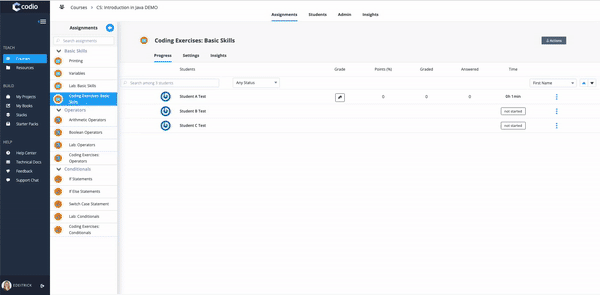
Additionally, similar to Google Docs and GitHub, you can create a thread between users that directly references part of a file. This allows students to respond to comments as they iterate on their code.
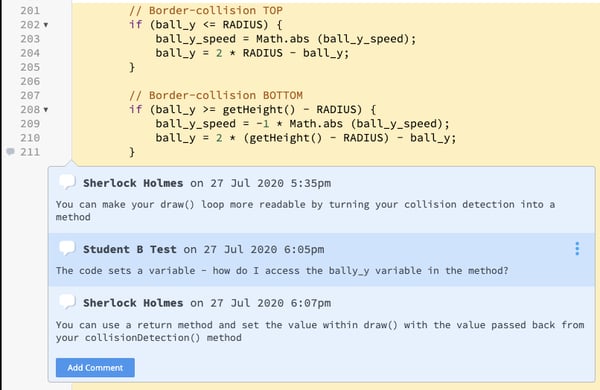
A student asking a clarifying question about a comment, creating a comment thread in the code file
This also means teams of instructors can see what their colleagues noted as problematic for consistent feedback to students, allowing them to “get up to speed” on every challenge or issue encountered until that point.
Edit or Delete Comments with Every Iteration
Comments are not permanent disrupters in code files. Users can edit or delete comments they authored. Students can resolve a comment or comment thread by editing the highlighted section of code.
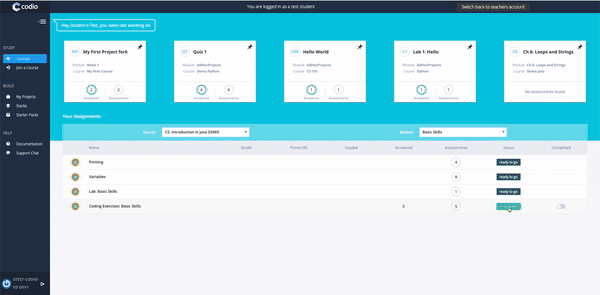
Students and teachers can see all code comments in an assignment or project by navigating to Education > Code comments in the top menu bar. Resolved comments are denoted as "Obsolete". Live or un-resolved comments have an arrow icon that when clicked, takes the user to the comment's location in the code.
Codio’s Remote Feedback Toolset
In-Line comments round out our improvements to help you provide remote help and feedback to students both synchronously and asynchronously.
Quickly understand how students built out the code you are giving feedback on with our Code Playback feature—a key feature that distinguishes Codio from other “textbook replacements,” virtual labs, and IDE solutions for computer science education. Code Playback takes a snapshot of each keystroke, enabling you to “watch” a student code and unlock previously inaccessible insights into student learning behaviors (it also helps with plagiarism detection, too).
Synchronously, you can use our cursor presence feature while on a call to find what students are looking at, highlight pieces of code to them, and make changes to student code.
Asynchronously, you can leave in-line code comments. Students can either resolve them by simply modifying the code or responding to the thread if they are confused. This allows you or others on your instructional team to see and continue previous conversations without attempting to remember your feedback for each student.
These same tools can be used by students collaborating on group assignments.
Future Updates
As we hear of more users going online, we are attempting to make remote instruction as effortless as possible. The in-iine comments feature is our most recent step in easing remote code review. Keep an eye out for streamlined workflows for pair/group assignments.
If you have a feature request, please use our in-product Feedback tool to let us know!
